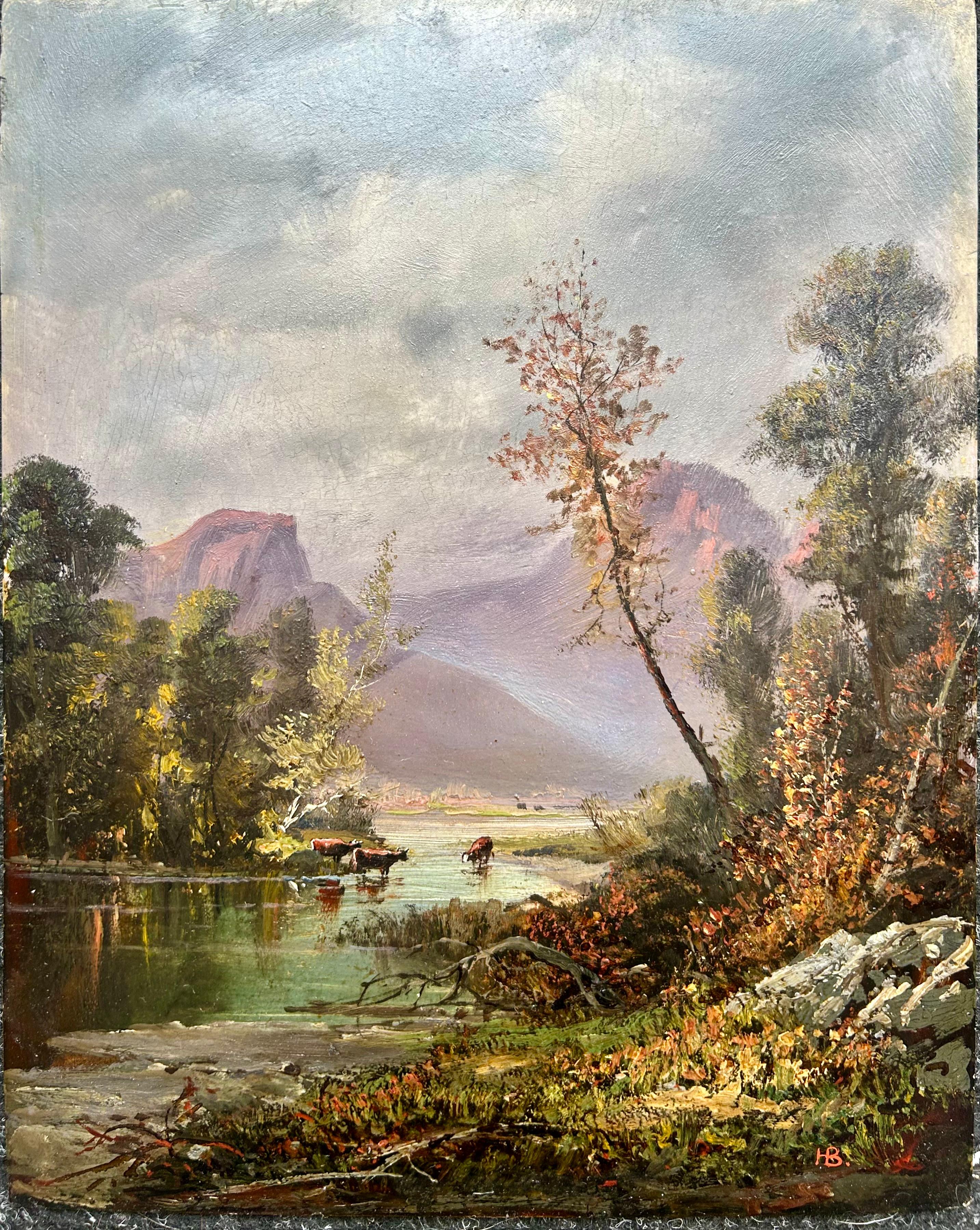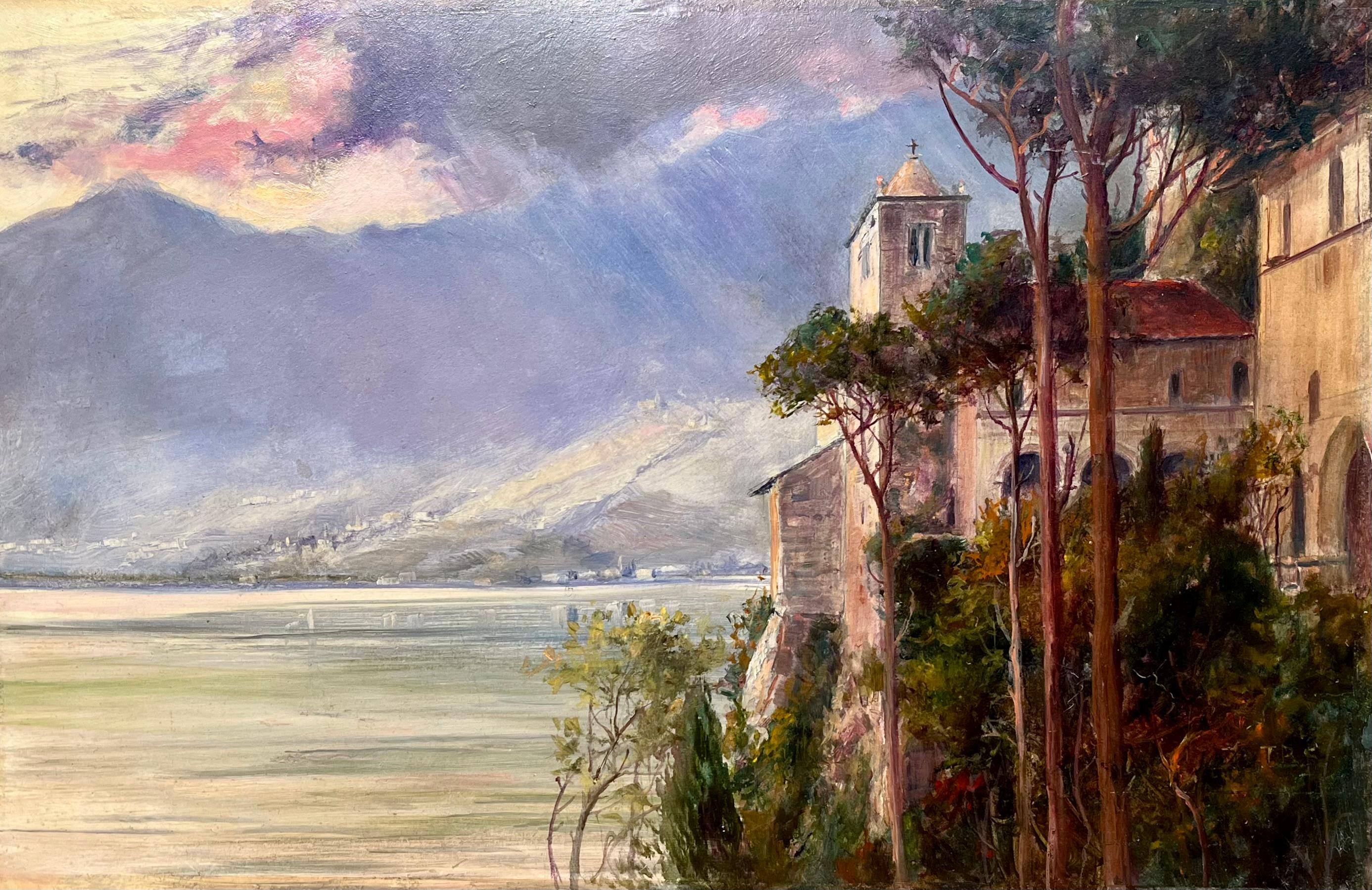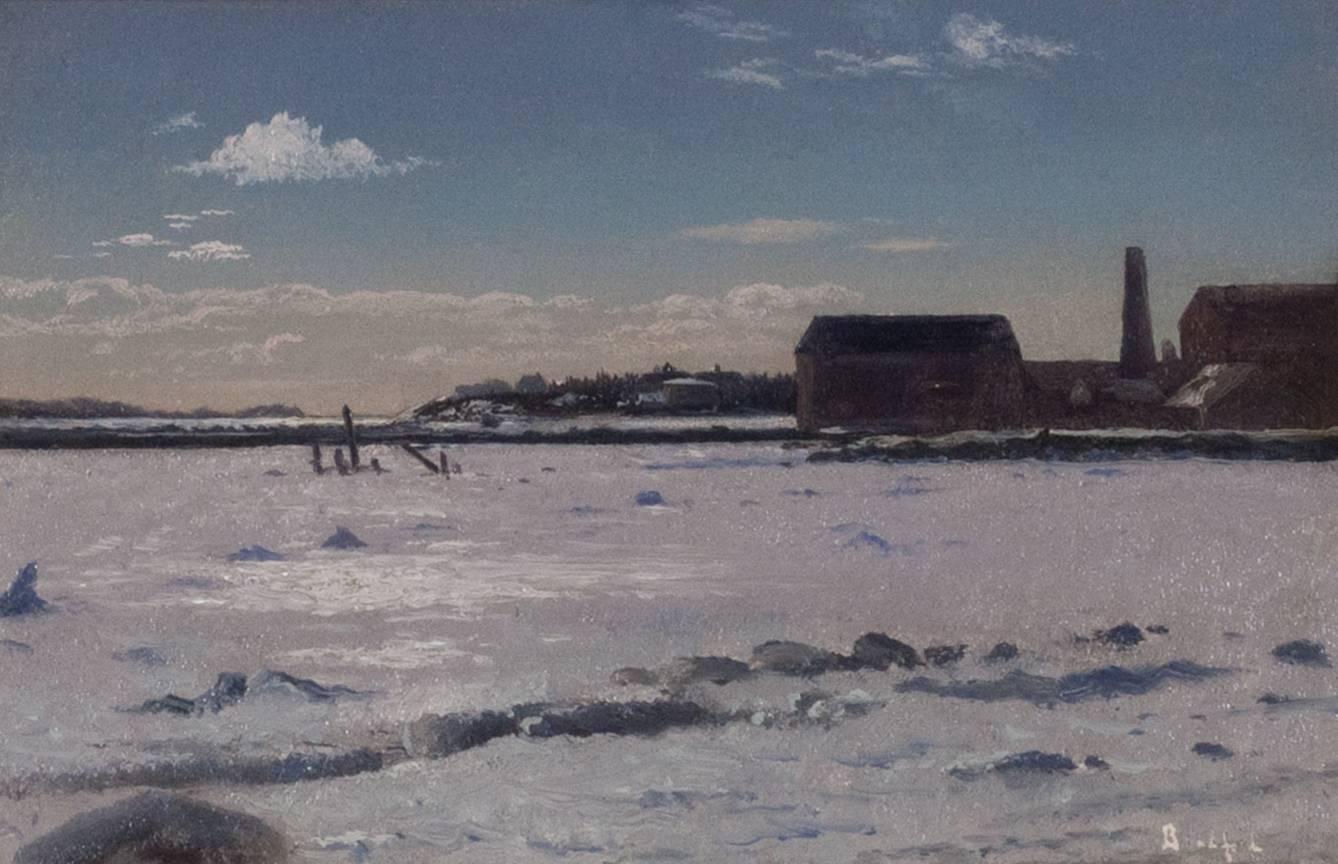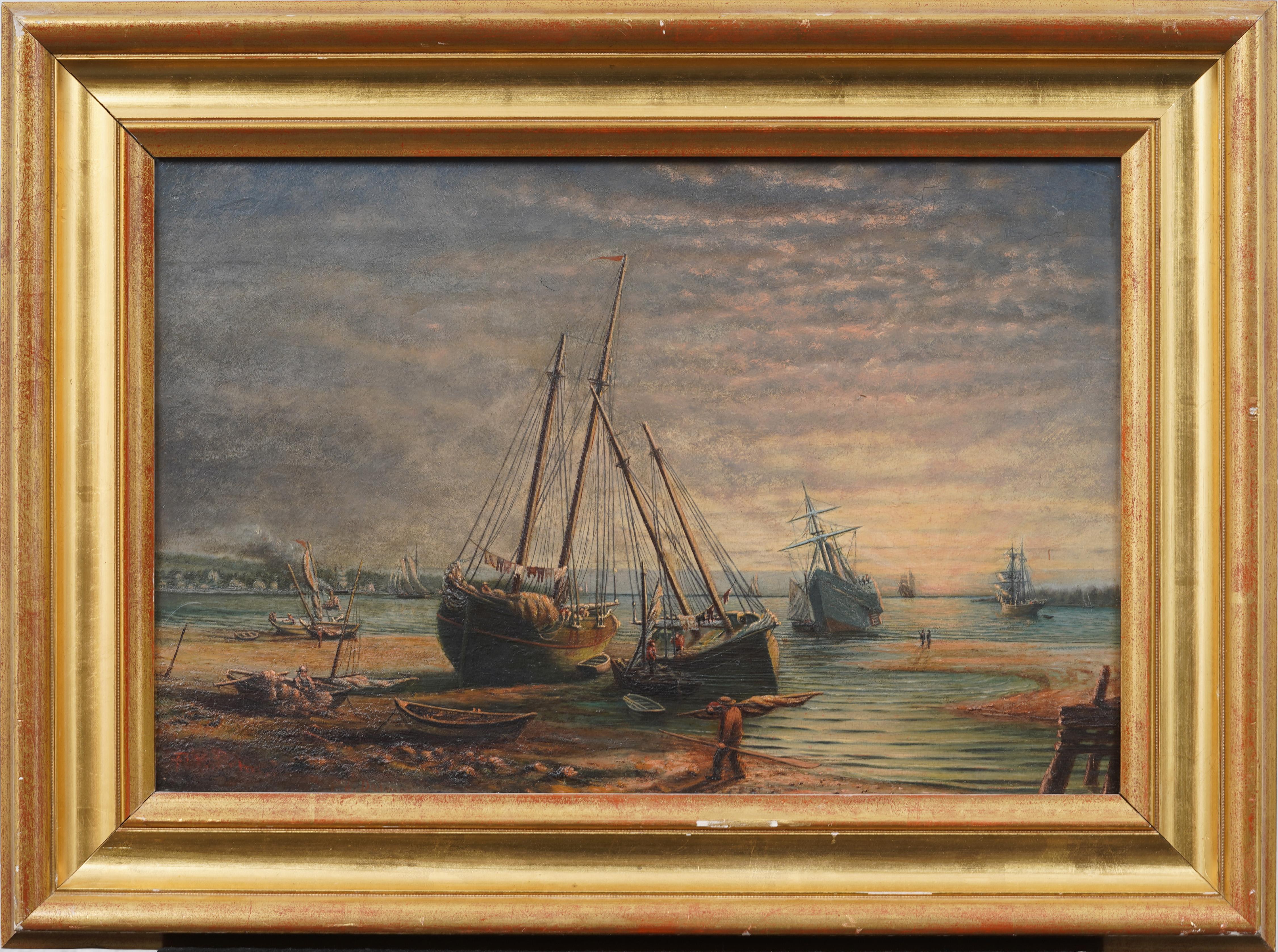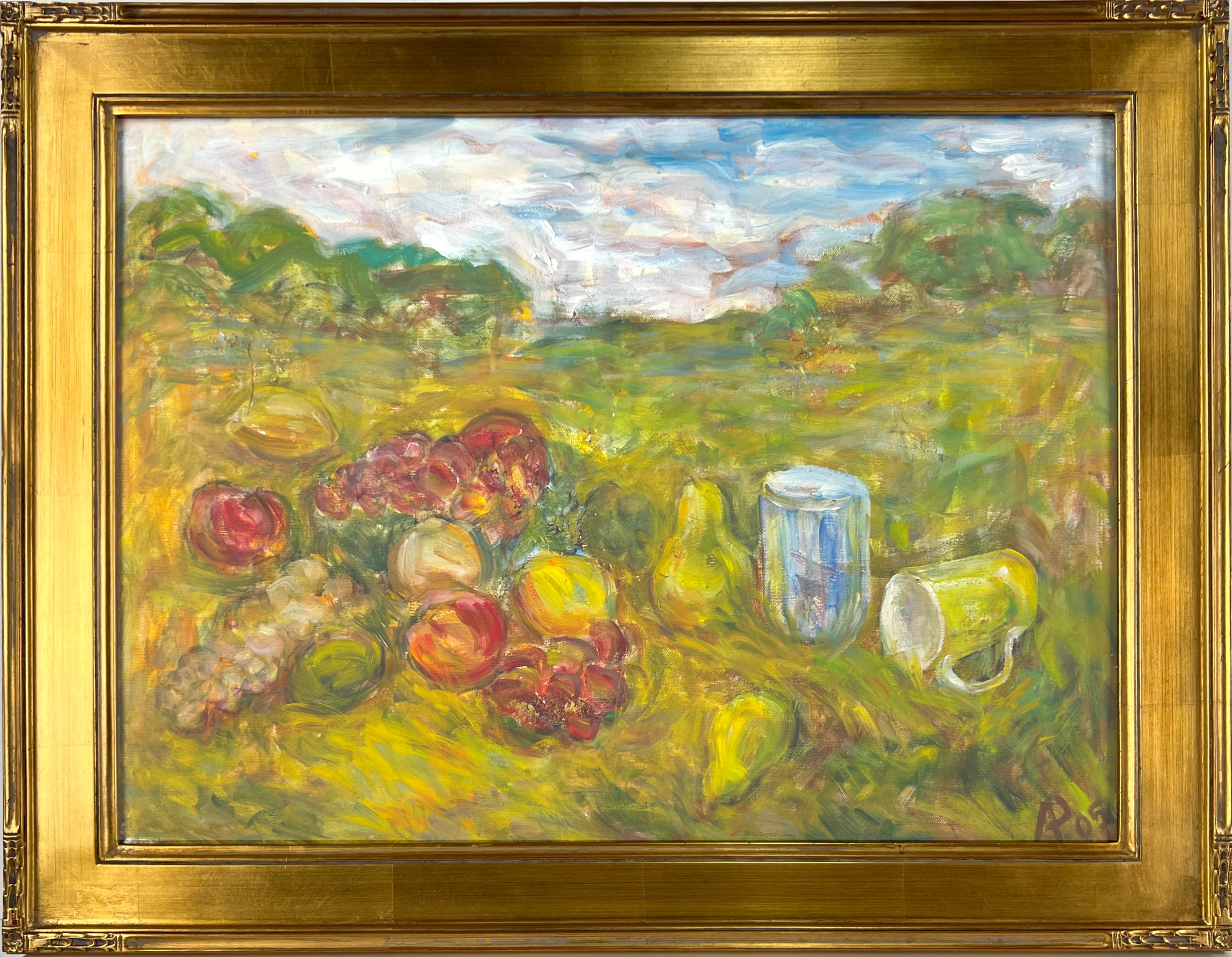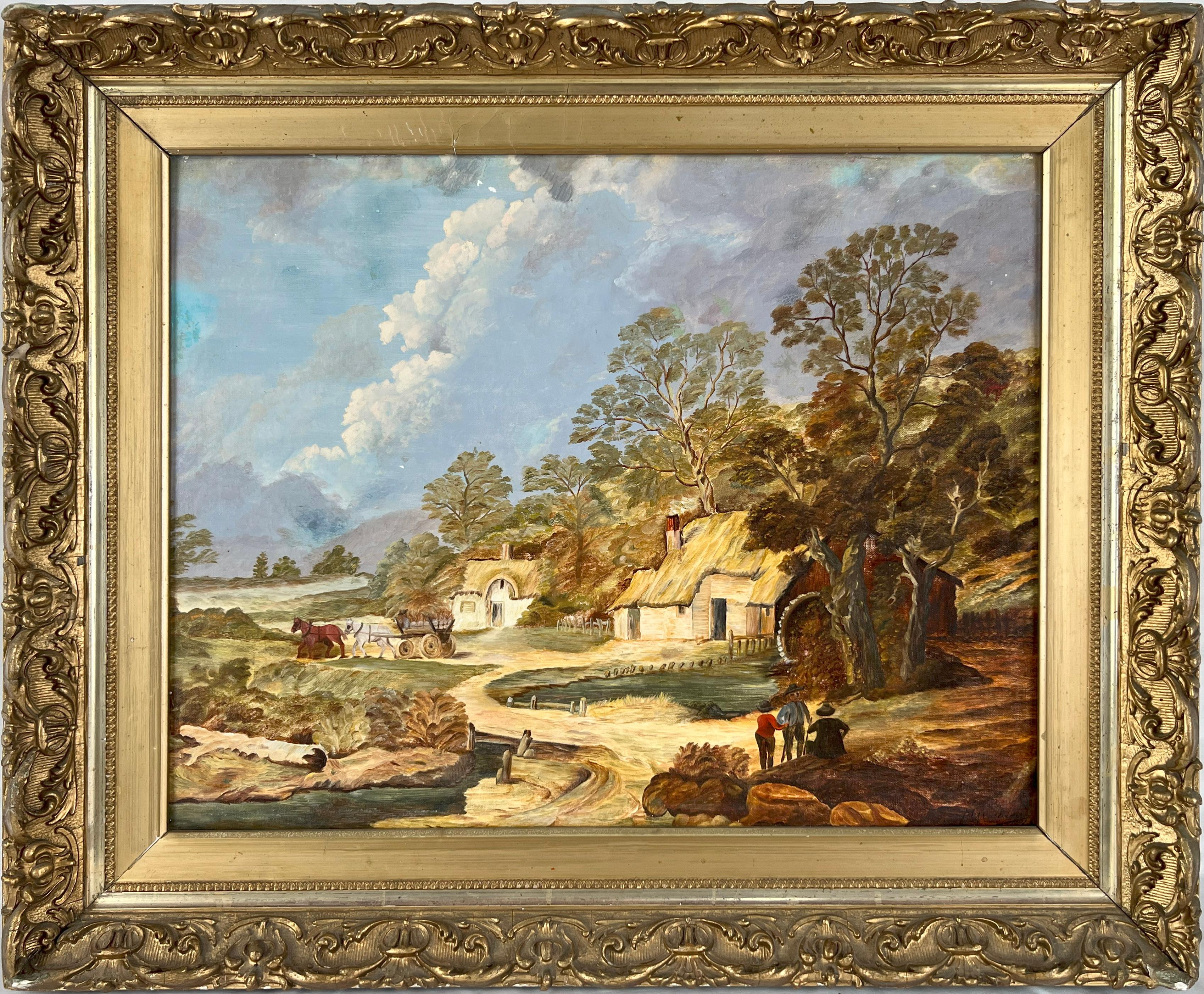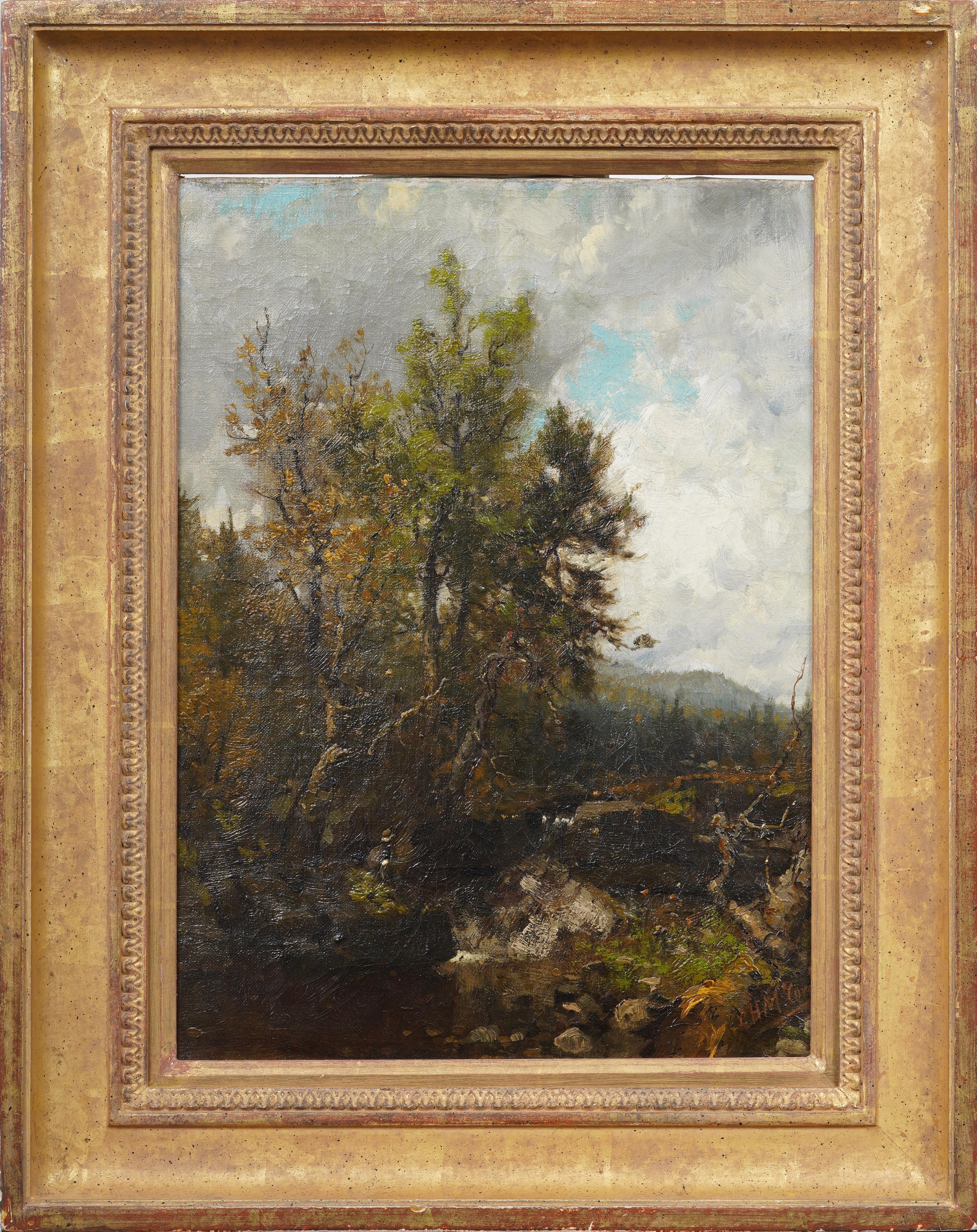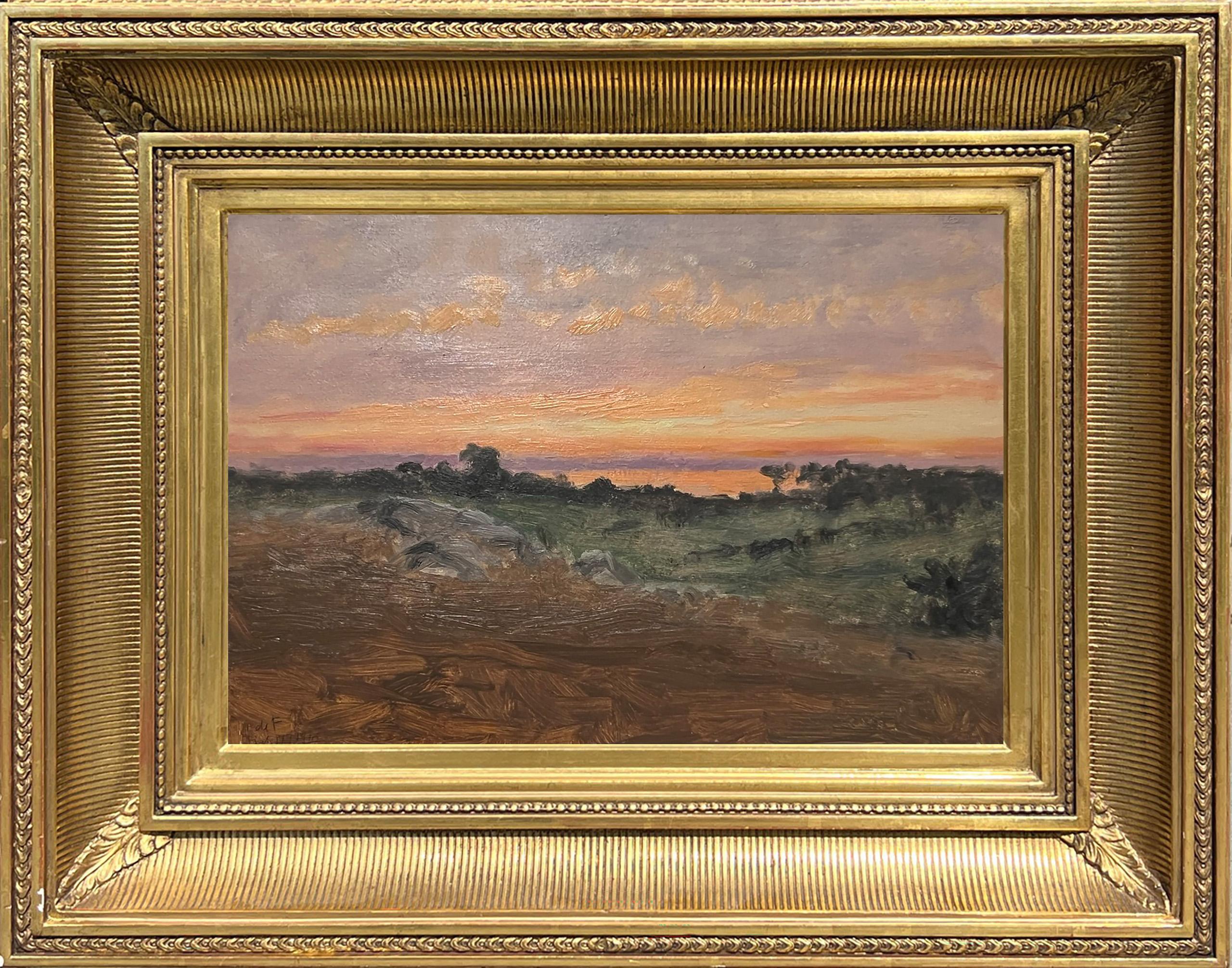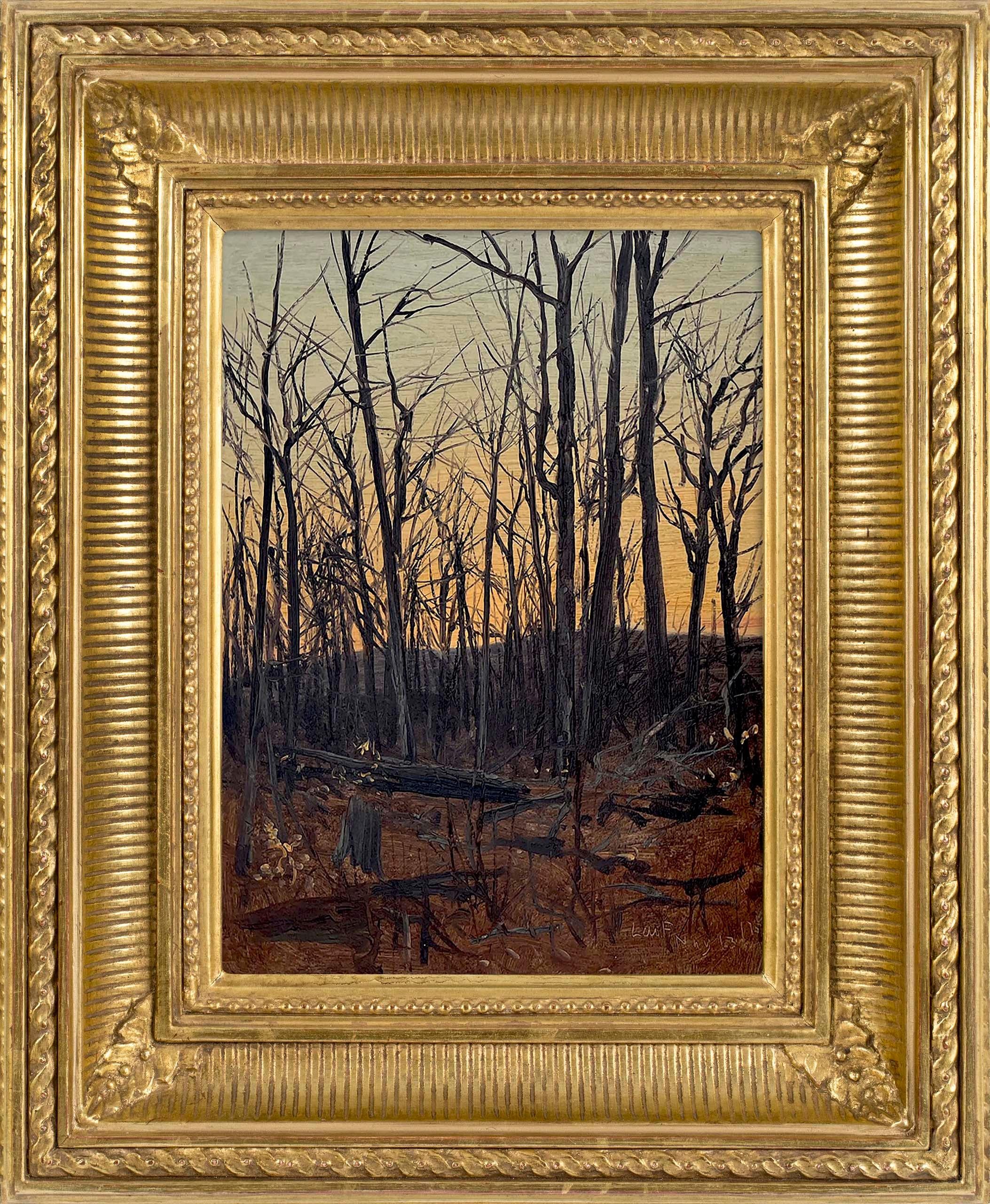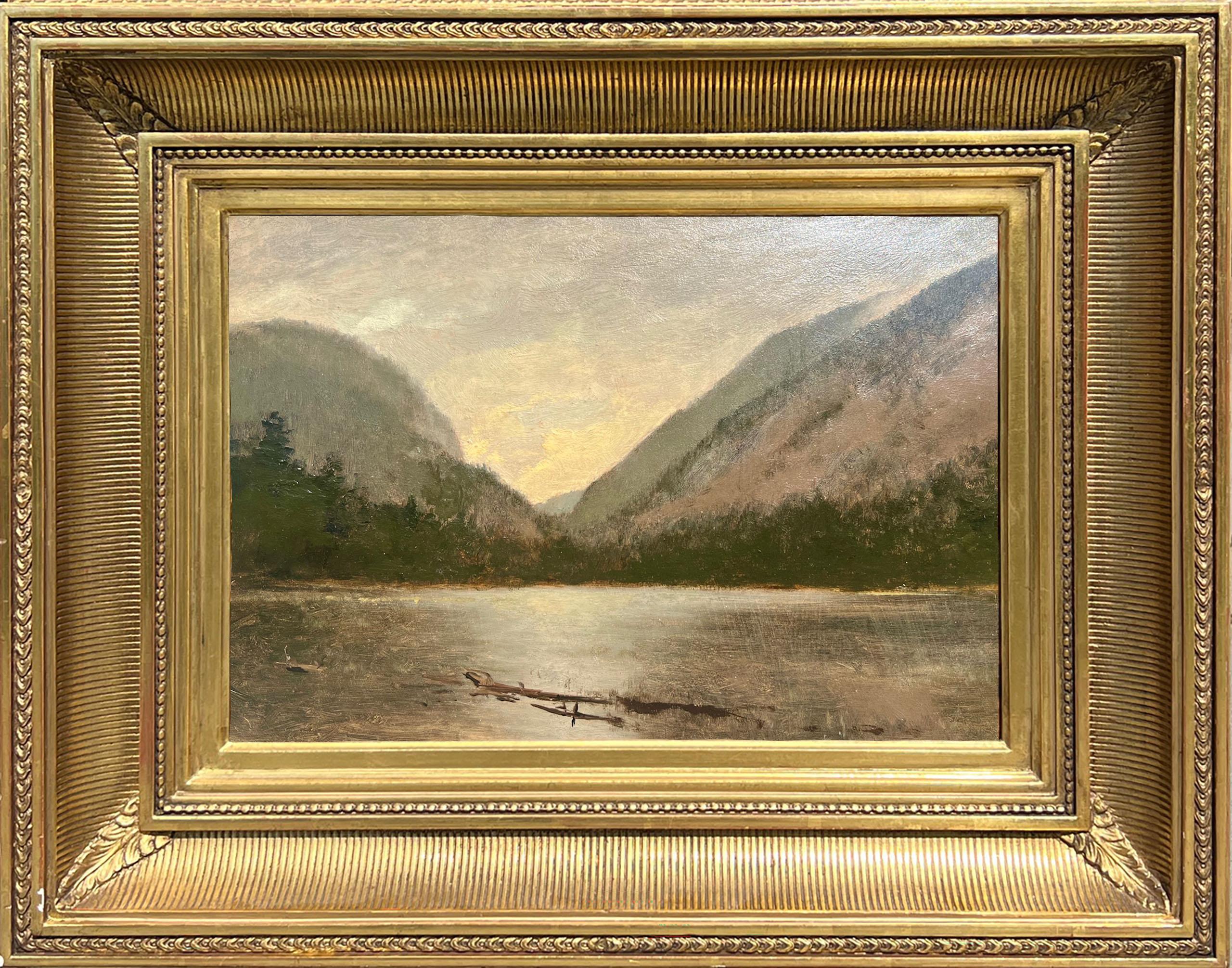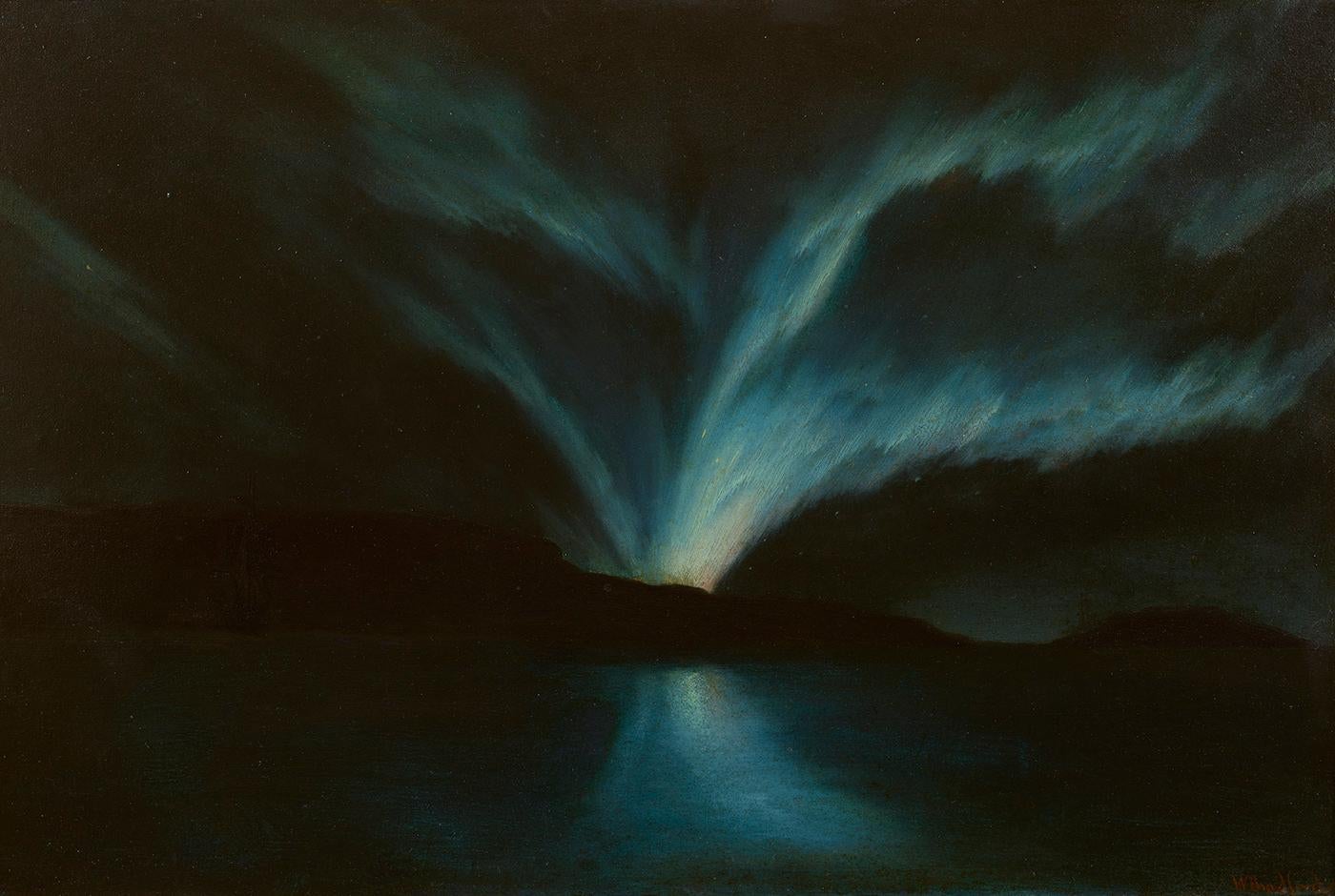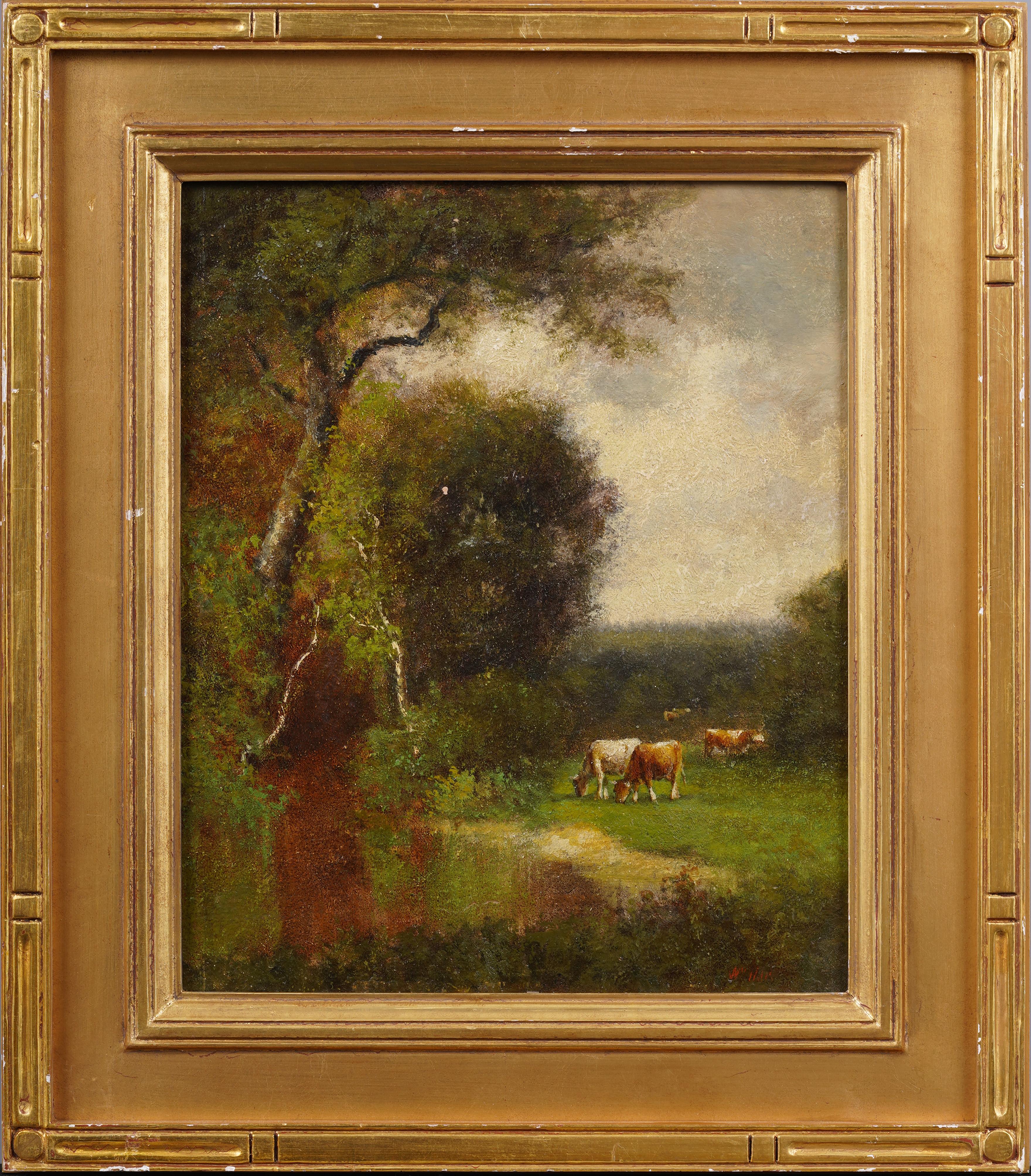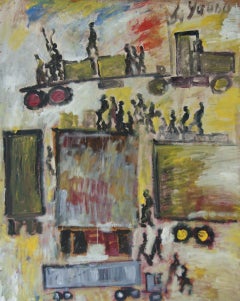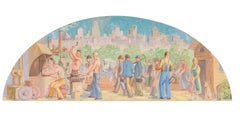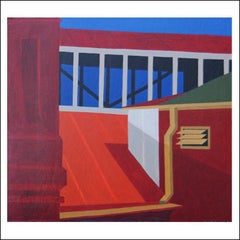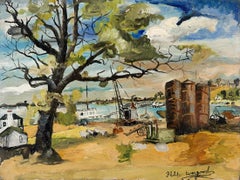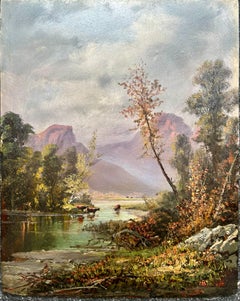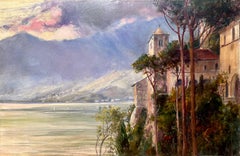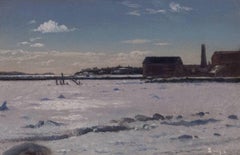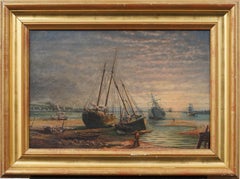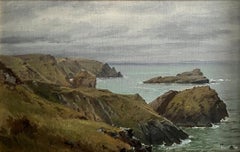
"Cornish Coast, England, " William Trost Richards, Hudson River School, Seascape
View Similar Items
Want more images or videos?
Request additional images or videos from the seller
1 of 9
William Trost Richards "Cornish Coast, England, " William Trost Richards, Hudson River School, Seascapecirca 1878
circa 1878
$15,000List Price
About the Item
- Creator:William Trost Richards (1833 - 1905, American)
- Creation Year:circa 1878
- Dimensions:Height: 12 in (30.48 cm)Width: 18 in (45.72 cm)
- Medium:
- Movement & Style:
- Period:
- Condition:Excellent.
- Gallery Location:New York, NY
- Reference Number:1stDibs: LU115624233131
About the Seller
5.0
Gold Seller
Premium sellers maintaining a 4.3+ rating and 24-hour response times
Established in 2008
1stDibs seller since 2019
195 sales on 1stDibs
Authenticity Guarantee
In the unlikely event there’s an issue with an item’s authenticity, contact us within 1 year for a full refund. DetailsMoney-Back Guarantee
If your item is not as described, is damaged in transit, or does not arrive, contact us within 7 days for a full refund. Details24-Hour Cancellation
You have a 24-hour grace period in which to reconsider your purchase, with no questions asked.Vetted Professional Sellers
Our world-class sellers must adhere to strict standards for service and quality, maintaining the integrity of our listings.Price-Match Guarantee
If you find that a seller listed the same item for a lower price elsewhere, we’ll match it.Trusted Global Delivery
Our best-in-class carrier network provides specialized shipping options worldwide, including custom delivery.More From This Seller
View AllTrucks in the City African American Self-Taught Florida Outsider Folk Art Urban
By Purvis Young
Located in New York, NY
Trucks in the City by African American, Folk, Self-Taught, Florida, Outsider Art Purvis Young Urban
Young was an American artist from Miami....
Category
Late 20th Century Outsider Art Figurative Paintings
Materials
Oil, Board
Industrial Mural Study, Veterans Memorial Building, Santa Barbara WPA American
Located in New York, NY
Industrial Mural Study, Veterans Memorial Building, Santa Barbara WPA American
Joseph Edward Knowles (1907-1980)
"Study for Industry Mural, Veterans Memorial Building, Santa Barbara, CA"
19 1/2 x 50 1/2 inches
Oil on board, c. 1930s.
Estate stamp verso
Framed: 27 x 60 inches
The completed mural is currently hanging on the wall, part of the building actually, at the Veterans Memorial Building in Santa Barbara. A photo of the work insitu is included in the attached photos.
BIO
Joseph Edward Knowles was born in Kendall, Montana, on June 15, 1907. He grew up in San Diego, California. At age twenty, two years before the beginning of the Great Depression, he moved north to another town on the coast of California---Santa Barbara. There he began studying fine art at the Santa Barbara School of the Arts* (1927-1930), under the supervision of Frank Morley Fletcher, previously director of the Edinburgh College of Art. Fletcher, who was trained in portraiture, landscape painting, and woodblock* printing, was a great influence on young Knowles. It was there that Knowles learned the art of color woodblock printmaking, a medium in which he showed great skill.
Not long after completing his studies with Fletcher, Knowles began teaching art. For a period of thirty years, from 1930 to1960, he taught at the Cate School in Carpinteria, California. In 1934-1935, Knowles traveled throughout Europe, further developing his artistic skills in England, France, and Italy. Upon his return, he continued to teach art at various schools and institutions: Cate School, Crane Country School, extension classes at the University of California at Santa Barbara (UCSB), and at the Santa Barbara Museum of Art (SBMA). Knowles also served as an art education consultant for the County of Santa Barbara. In addition, he was founding co-director and president of the Santa Barbara Fine Arts Institute (1969-1972), which later developed a specialization in photography and became the Brooks Institute of Photography. Knowles died at his home in Santa Barbara on September 8, 1980.
Much of Knowles' watercolor work is associated with what has been termed the "California School*," a loose grouping of artists throughout the state that included such figures as Millard Sheets, Phil Dike, Dong Kingman, George Post, and the Santa Barbara painters Dan Lutz and Standish Backus, Jr. The California School artists, including Knowles, were known for their fresh, direct, spontaneous style of watercolor painting. Knowles and other members of the school found inspiration in nature and the built environment alike, emphasizing elements of design in their exuberant, boldly stated, colorful scenes from everyday life. While painting in a representational* manner, Knowles generally avoided photographic realism, preferring subjective interpretation of his subjects. In this, as well as in his experimental approach and vigorous brushwork, he displayed a strongly modern sensibility.
Knowles often used the wet-on-wet watercolor technique as he painted seascapes and landscapes, mostly along the California coast. He also employed dry-brush* techniques in many of his paintings, often leaving some of the white of the watercolor paper exposed. Some of the latter depict trees and other forms in a broken and airy manner that recalls Cezanne.
Knowles' colored woodblock prints are more reserved and exact in their draftsmanship than his paintings. Spare, clean, lyrical lines are drawn to illustrate floral motifs and boat scenes with a touch of asymmetry conjuring Japanese woodblock prints. His murals from the post-World War II period are considerably more modern in their approach and show an emphasis on design and color.
PROFESSIONAL ORGANIZATIONS
California Watercolor Society (1940 - 1955)
Santa Barbara Art Association (Vice President - 1952)
ONE-MAN EXHIBITIONS
Golden Gate International Exposition (GGIE) - San Francisco, California
San Diego Fine Arts Gallery (SDMA) - San Diego, California
Santa Barbara Museum of Art (SBMA) - Santa Barbara, California
Cowie Galleries - Los Angeles, California
Gallery de Silva - Santa Barbara, California
Bradley Galleries - Santa Barbara, California
MURALS
Westmont College - Ellen Porter Hall Mural - Santa Barbara, California
Safeway Grocery (now Vons Grocery on West Victoria Street) - Exterior Tile Mosaic -
Santa Barbara, California
Santa Barbara Bank & Trust - Interior Mosaic Panels, Santa Barbara, California
Santa Barbara Girls Club - Interior Mosaic Mural - Santa Barbara, California
Ernest Righetti High School - Mosaic Mural - Santa Maria, California
Shell Oil Company - Mosaic Panel - California
Beckman Instruments, Corporate Headquarters - Mosaic - Fullerton, California
STAINED GLASS WINDOWS, WALLS and PANELS
Katherine Thayer Cate Memorial Chapel - Cate School, Carpinteria, California
William S. Porter Memorial Chapel - Cottage Hospital, Santa Barbara, California
La Rinconada Building - Santa Barbara, California
ILLUSTRATIONS
"California's Wonderful Corner: True Stories for Children from the History of the Santa Barbara Region," by Walter A. Tompkins (1962 & 1975)
China Designs:
Two sets of dinnerware for Winfield China...
Category
1930s American Realist Figurative Paintings
Materials
Oil, Board
"Library" Mid 20th Century Precisionism Cubist Realism Modernism Architectural
Located in New York, NY
"Library" Mid 20th Century Precisionism Cubist Realism Modernism Architectural. Signed verso.
Robert Herrmann hid his paintings from the public for ov...
Category
1960s Modern Landscape Paintings
Materials
Oil, Board
"Great Neck Landscape" American Scene Social Realism Mid 20th Century Modern WPA
By Philip Evergood
Located in New York, NY
"Great Neck Landscape" American Scene Social Realism Mid 20th Century Modern WPA
PHILIP HOWARD EVERGOOD (1901 - 1973)
Great Neck Landscape
12 x 16 inches
Oil on board, circa 1935.
S...
Category
1930s American Realist Landscape Paintings
Materials
Oil, Board
Hook Creek Hungarian American European Modernism WPA 1935 Long Island Canal Boat
By Stephen Csoka
Located in New York, NY
Hook Creek Hungarian American European Modernism WPA 1935 Long Island Canal Boat Oil on canvas board 12” x 15". The framed size is 18 x 21.
In addition to this painting, we will include and etching of this scene.. The Print measures 3 1/2 x 6 inches and the sheet, 6 1/2 x 8 1/2 inches. It is signed: S. Csoka, 1943.
Stephen (Istvan) Csoka was born in Gárdony, Hungary on January 2, 1897 and died in New York in 1989. He is best remembered as a painter and etcher of portraits, nudes, landscapes, genre, and horses. Csoka studied at the Budapest Royal Academy of Art and his memberships include Associate of the National Academy of Design in New York City; the Society of American Etchers in Brooklyn, NY; the Society of Brooklyn Artists; and the Hungarian Etchers Association.
Csoka's exhibitions and awards include a medal at the Barcelona International Exhibition in 1929; a prize at the City of Budapest Exhibit in 1930; prizes at the Society of American Etchers in 1942 and 1945; prizes at the Library of Congress in 1944 and 1946; a prize at the Society of Brooklyn Artists in 1944; a prize at the Philadelphia Watercolor Club in 1945; the Corcoran Gallery of Art in 1945; the Carnegie Institute in 1943, 1944, and 1945; the Art Institute of Chicago in 1944; the Los Angeles Museum of Art in 1945; the National Academy of Design from 1940 through 1945; one-artist shows at the Contemporary Artists in 1940, 1943, and 1945; and the Minneapolis State Fair in 1943. *Stephen continued to recieve awards and exhibit his work throughout his life. In 1997, Hofstra Museum sponsored a Retrospective/Centennial exhibition in honor of his birth.
Collections representing Csoka's work are the Metropolitan Museum of Art, New York, NY; the Brooklyn Museum, Brooklyn, NY; the Museum of Fine Arts, Boston, MA; the British Museum, London, England; the Bezalel National Museum, Jerusalem, Israel; the Butler Institute of American Art, Youngstown, Ohio; Whistler House Museum of Art, Lowell, MA; the Cleveland Museum of Art, Cleveland, OH; Columbus Museum of Art, Columbus, OH; the Sheldon Swope Art Museum, Terre Haute, IN; the Mobile Museum of Art, Mobile, AL; the Frederick R. Weisman Art Museum, Minneapolis, MN; the Museum of New Mexico, Santa Fe, NM; the Budapest Museum of Fine Arts, Budapest, Hungary; Hungarian National Gallery, Budapest, Hungary, the Museum of the City of Budapest, Budapest, Hungary; the Library of Congress, Washington, DC; Carnegie Museums of Pittsburgh, Pittsburgh, PA; the Chrysler Museum of Art, Norfolk, VA; Georgia Museum of Art, Athens, GA; Hofstra Museum, Hofstra University, Hempstead, NY; Holocaust Museum, Glen Cove, NY; National Academy of Art, New York, NY; New Orleans Museum of Art, New Orleans, LA; New York Historical Society, New York, NY;New York Public Library, New York, NY; National Gallery of Art, Washington, DC; Peabody Museum, Cambridge, MA; Pennsylvania Academy of the Fine Arts, Philadelphia, PA; Reading Public Museum, Reading, PA; Livingston Arts Center, Mount Morris, NY; Ball State Teachers College, Muncie, IN; City College, New York, NY; Fashion Institute of Technology, New York, NY; Hungarian Consulate, New York, NY; Hungarian Heritage, New Brunswick, NJ; Hunter College, New York, NY; IBM Collections; Princeton Print Club...
Category
1930s Realist Landscape Paintings
Materials
Oil, Board
Sand Pit Hungarian American Painting Workers Horses European Modernism 1928 WPA
By Stephen Csoka
Located in New York, NY
Sand Pit Hungarian American Oil Painting Workers Horses European Modernism 1928 WPA
The board measure 10 3/4 x 15 1/2 inches. The work was painted in Hunga...
Category
1920s Expressionist Landscape Paintings
Materials
Oil, Board
You May Also Like
Mountain Stream
By Henry Boese
Located in Fredericksburg, VA
In Mountain Stream, Henry Boese presents a majestic and serene vision of the American wilderness. A crisp, rushing stream flows through the heart of the composition, cascading over r...
Category
Mid-19th Century Hudson River School Landscape Paintings
Materials
Oil, Board
A Thunder Shower on Lago Maggiore, North Italy
By Thomas Ralph Spence
Located in Fredericksburg, VA
Thomas Ralph Spence’s "A Thunder Shower on Lago Maggiore, North Italy" captures a dramatic moment of nature’s power over the serene landscape of Lago Maggiore. Known for his architec...
Category
Late 19th Century Hudson River School Landscape Paintings
Materials
Oil, Board
Fairhaven Harbor (Old Tack Works Wharf)
By William Bradford
Located in New York, NY
Signed lower right: Bradford
Category
19th Century Hudson River School Landscape Paintings
Materials
Oil, Paper, Board
Antique American Sunset Seascape Giltwood Framed New England Harbor Oil Painting
Located in Buffalo, NY
Antique American sunset seascape oil painting. Oil on board. Signed. Framed. Measuring: 18 by 24 inches overall, and 12.25 by 18 painting alone.. In excellent original condition. Ha...
Category
1850s Hudson River School Figurative Paintings
Materials
Oil, Board
Picnic in the Vineyard Spring Contemporary French Impressionist Style Landscape
By Alexandr Rapoport
Located in Soquel, CA
Spring Picnic in the Vineyard, Contemporary Impressionist Landscape
Beautiful oil painting of a variety of fruits with cups in a field of grass by Alexander Rapoport (Russian-Ameri...
Category
21st Century and Contemporary Hudson River School Landscape Paintings
Materials
Canvas, Oil, Illustration Board
Hudson River School Style - The Homestead and Grist Mill 1942
By A. Mathieu
Located in Soquel, CA
Hudson River School Style - The Homestead and Grist Mill 1942
In the Hudson River School style by A (K) Mathieu (American, 19th-20th C). Harvest time at the Homestead with a hay wago...
Category
1940s Hudson River School Figurative Paintings
Materials
Oil, Illustration Board, Stretcher Bars
$1,480 Sale Price
20% Off
